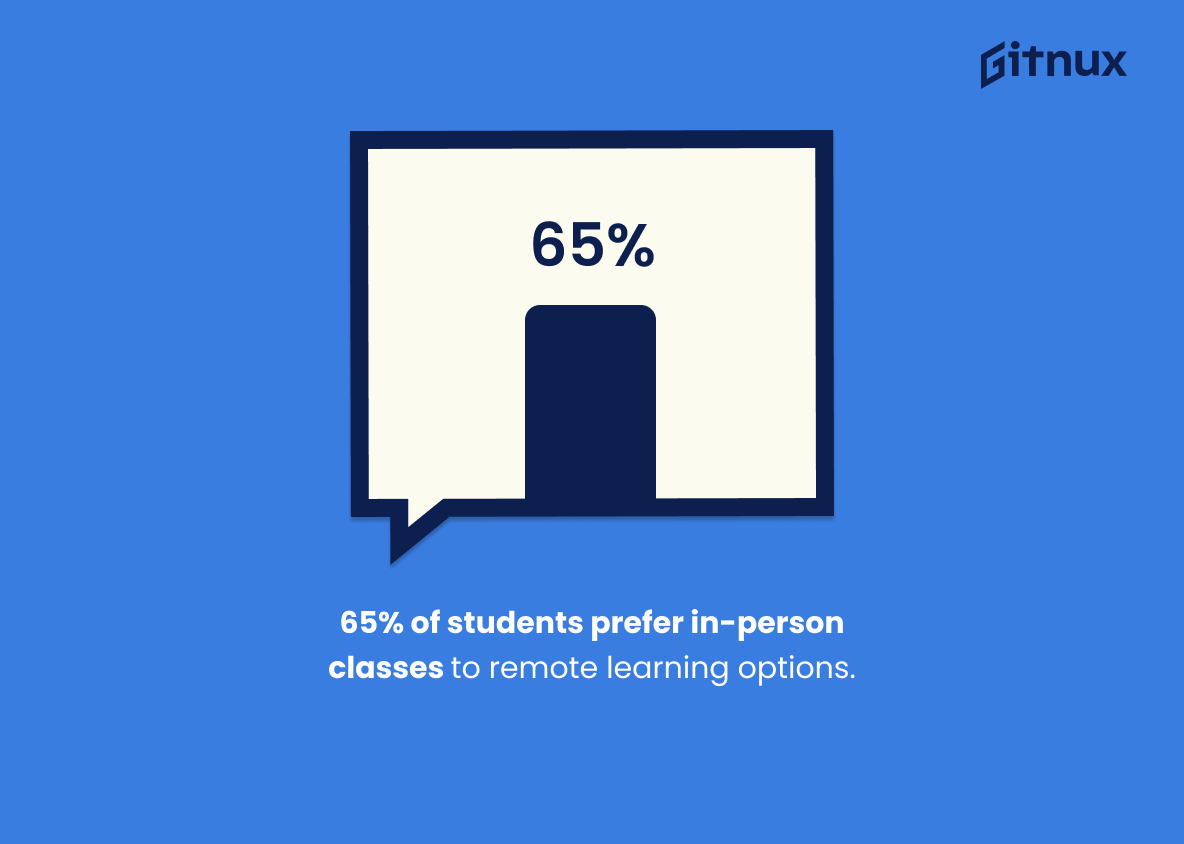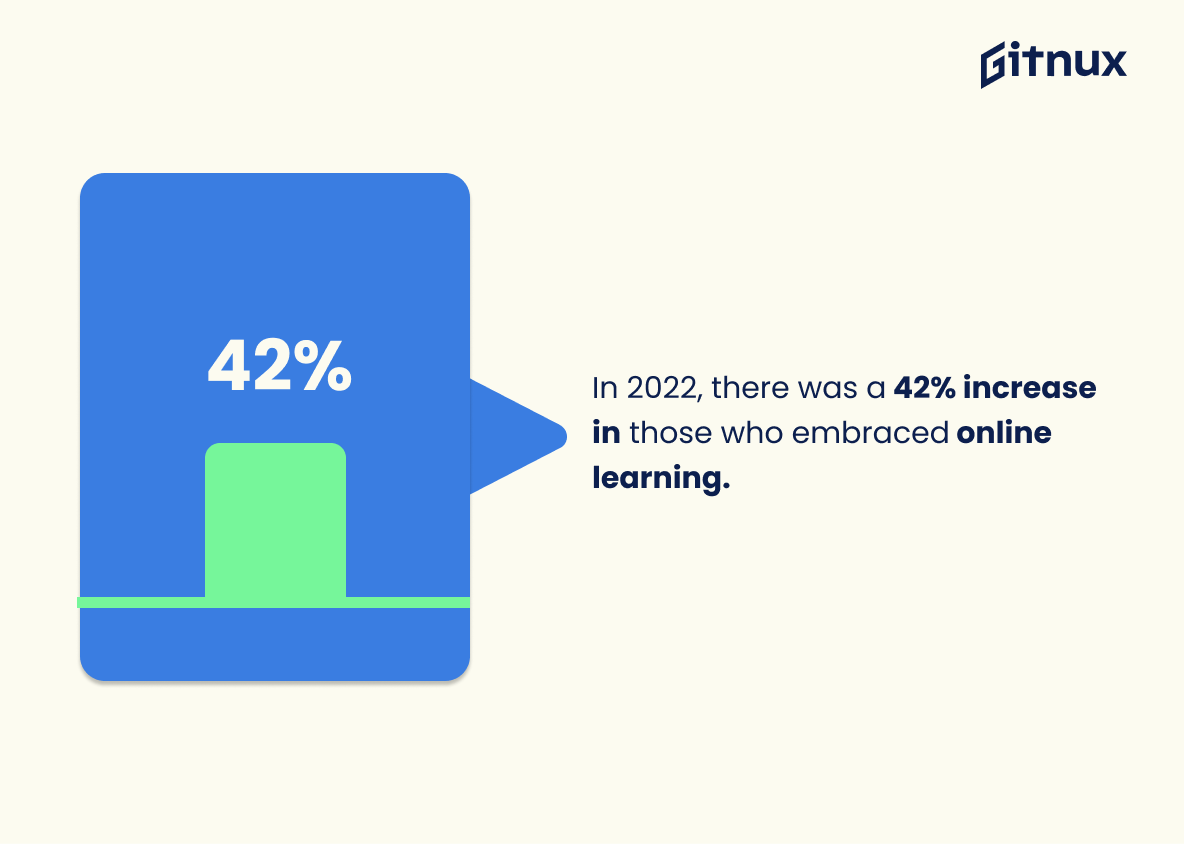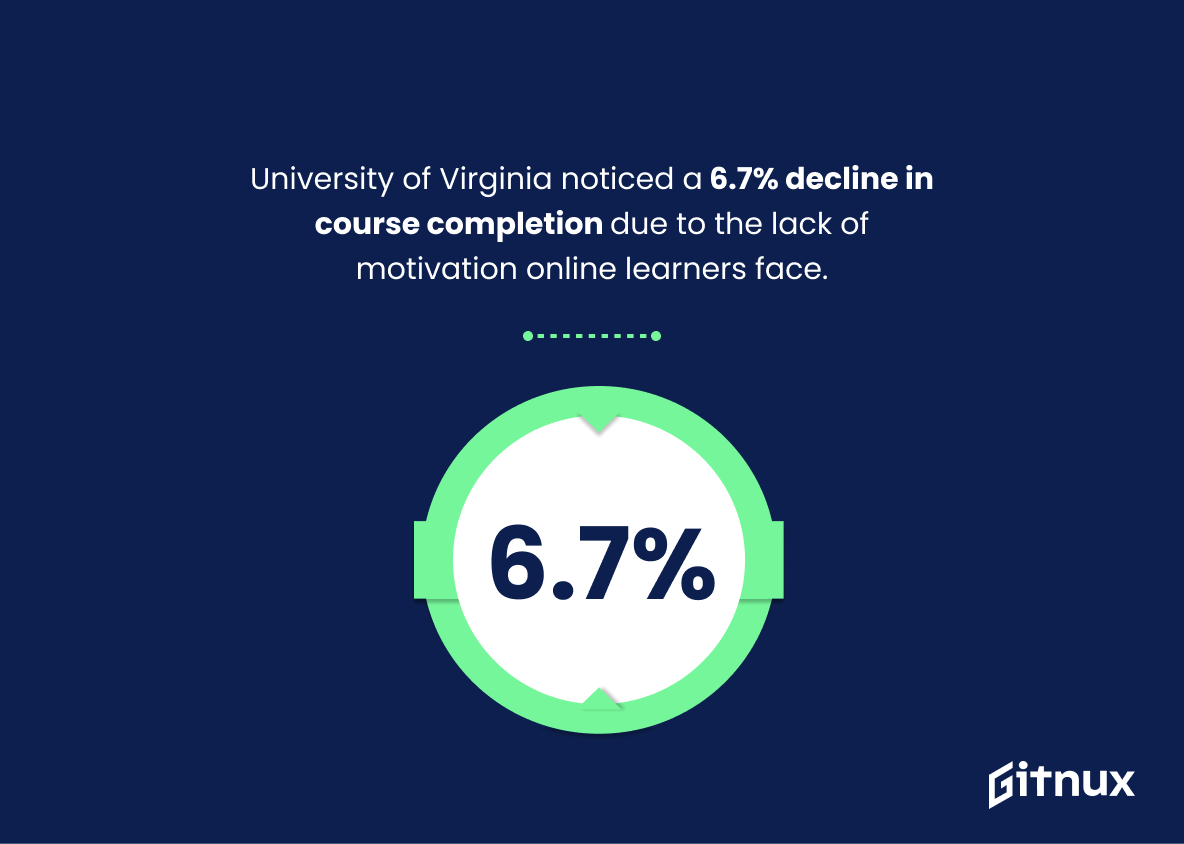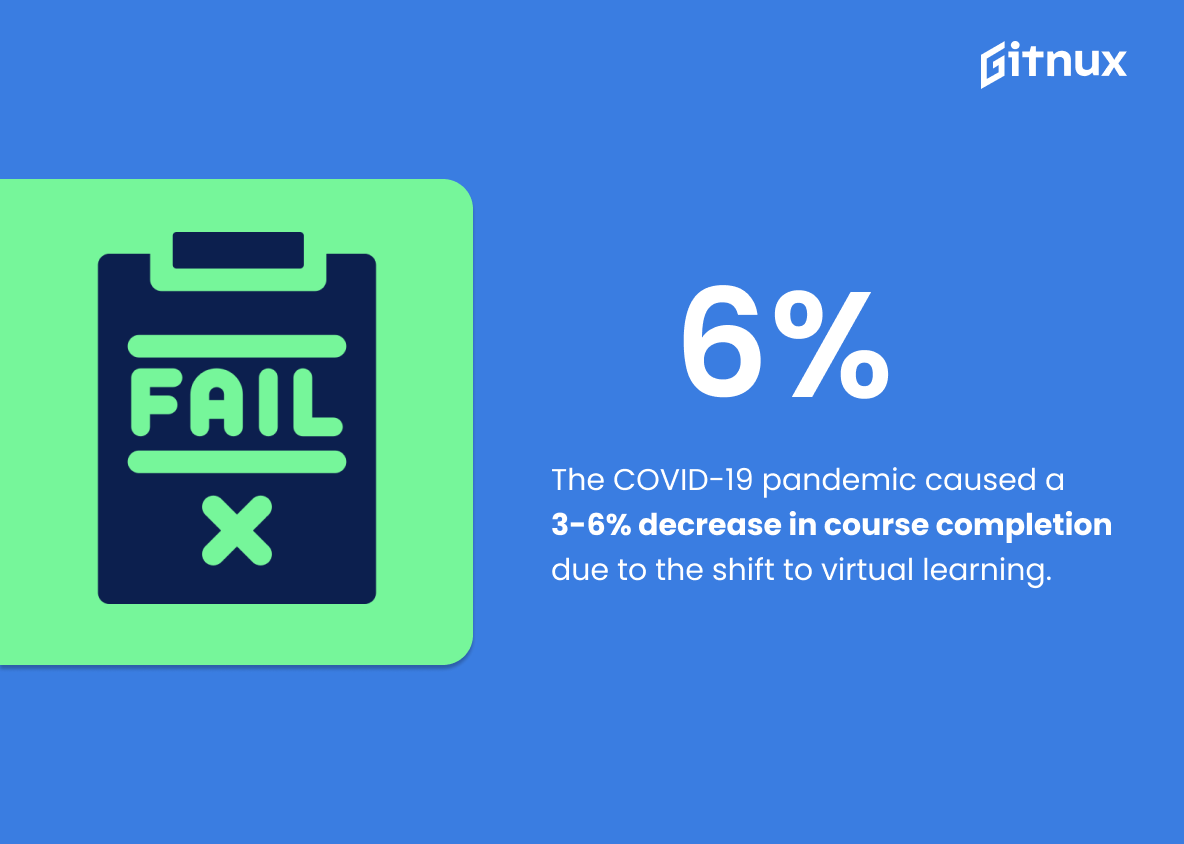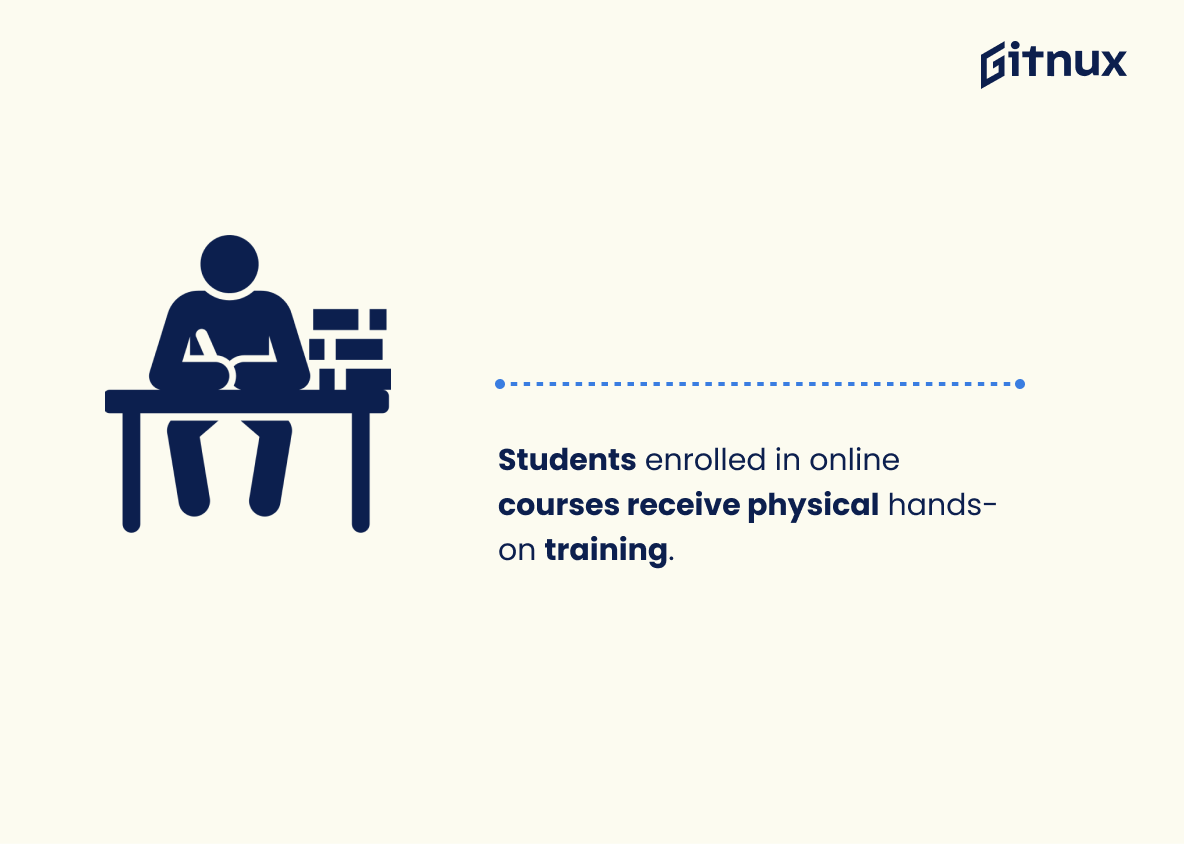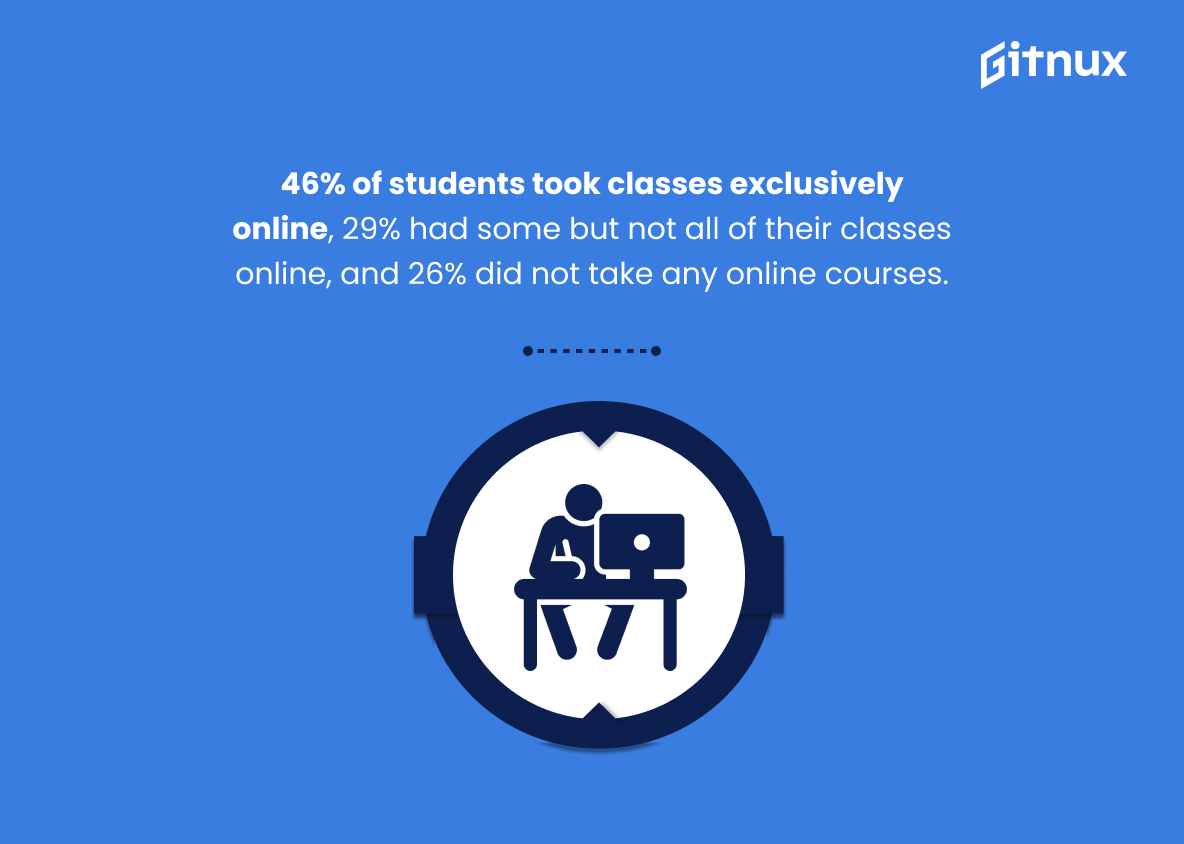As more and more people are turning to online learning as an alternative to traditional education, it is important to understand the statistics associated with this new form of education. In this blog post, we will explore the latest online learning statistics, including the number of students enrolled in online courses, the types of courses available, and the success rates of online learners. We will also look at the advantages and disadvantages of online learning, and discuss how online learning can help students achieve their educational goals.
Online Learning: Most Important Statistics
90% of companies now provide online learning options for their employees, up from 5% 25 years ago.
The COVID-19 pandemic caused a 3-6% decrease in course completion due to the shift from physical to virtual learning.
Online Learning: Statistics Overview
38% of parents report that their children lack the motivation to pay attention and engage in remote learning.
This statistic matters in the context of online learning statistics because it highlights the importance of providing students with the necessary tools and resources to stay motivated and engaged in their studies.
It also emphasizes the need for reliable network and data subscriptions to ensure that students have access to the materials and lectures needed for their online classes.
65% of students prefer in-person classes to remote or hybrid learning options, highlighting the need for upskilling in technology and computer literacy.
Students are not as successful in remote or hybrid learning options as they are in in-person classes. This highlights the need for students to upskill in technology and computer literacy in order to aid better learning in these new learning environments.
90% of companies now provide online learning options for their employees, up from 5% 25 years ago.
There is a growing trend of companies recognizing the value of online learning and providing options for their employees. This is important because it provides employees with more flexibility and control over their learning, as well as the ability to learn at their own pace.
In 2022, there was a 42% increase in those who embraced online learning.
The strategies of time management, flexibility, and increased course variety have been successful in increasing the popularity of online learning. This statistic is important because it indicates that online learning is becoming more widely accepted and utilized.
University of Virginia noticed a 6.7% decline in course completion due to the lack of motivation online learners face.
This statistic matters in the context of Online Learning Statistics because it shows the impact of a lack of face-to-face communication and social isolation on student motivation and course completion. It highlights the importance of providing support and guidance to online learners to ensure they remain engaged and motivated throughout their studies.
The COVID-19 pandemic caused a 3-6% decrease in course completion due to the shift from physical to virtual learning.
The shift to virtual learning has had a negative impact on course completion. This could be due to a variety of factors, such as lack of access to technology or difficulty adjusting to the new learning environment.
Understanding the impact of the shift to virtual learning is important for educators, administrators, and policy makers to ensure that students are able to access the resources they need to succeed in their online courses.
Offline learning is preferred by students over online learning as it is seen as more beneficial and less disruptive.
This statistic is significant in the context of online learning statistics, as it provides insight into student preferences and opinions on the two learning methods.
It shows that students prefer offline learning as it is seen as more beneficial and less disruptive, which could inform decisions about how to structure learning in the future.
Students enrolled in online courses receive physical hands-on training.
This statistic is influential because it demonstrates that online courses are providing students with more than just the traditional online learning experience.
By providing physical hands-on training, students are able to gain practical skills that can be applied in their future careers. This type of training is often not available in traditional classroom settings, so it is a valuable addition to the online learning experience.
In 2021, 32% of females and 29% of males undertook a course online, compared to 14% of males and 12% of females in 2019 – showing an increase in females upskilling digitally.
More people are taking advantage of online learning opportunities, and that the gender gap is closing in terms of who is taking part in online courses. This could be a sign of progress towards a more equitable education system.
46% of students took classes exclusively online, 29% had some but not all of their classes online, and 26% did not take any online courses, demonstrating the need for digital skills due to the COVID-19 effect.
This statistic is important because it shows how the need for digital skills has been exposed due to the COVID-19 effect, and how many students are taking classes online, either exclusively or partially.
This is important to understand the impact of online learning and the need for digital skills in the current environment.
Conclusion
In conclusion, online learning has become an increasingly popular option for students, and the statistics prove it. The number of students enrolled in online courses continues to grow, and the quality of the courses is improving.
Online learning offers a wide range of advantages, such as convenience, flexibility, and cost savings. With the right resources and support, online learning can be a great option for students looking to further their education.
References
1 – https://www.thinkific.com/blog/challenges-with-online-learning/amp/
2 – https://www.frontiersin.org/articles/10.3389/fpsyg.2022.1037311/full
3 – https://drexel.edu/soe/resources/student-teaching/advice/benefits-of-online-and-virtual-learning/
4 – https://drexel.edu/soe/resources/student-teaching/advice/benefits-of-online-and-virtual-learning/
5 – https://e-student.org/disadvantages-of-e-learning/
6 – https://journals.sagepub.com/doi/full/10.1177/23328584221081220
7 – https://ijcrt.org/papers/IJCRT2202450.pdf
8 – https://link.springer.com/article/10.1007/s40031-022-00766-y
9 – https://www.cso.ie/en/releasesandpublications/ep/p-isshdcb/householddigitalconsumerbehaviour2021/ictskillsandonlinelearning/
10 – https://www.bestcolleges.com/research/online-learning-statistics/
ZipDo, cited June 2023: Online Learning Statistics

